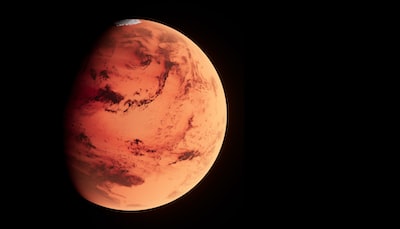Exploring the Red Planet: The Journey of the First Mars Probe
Introduction
The exploration of Mars, often referred to as
The Mars Space Race: Pioneering Planetary Exploration
The mid-20th century was a period of fierce competition in space exploration, famously known as the Space Race. This competition primarily involved the United States and the Soviet Union, with both nations vying for technological superiority by exploring celestial bodies beyond Earth. The successful launch of Sputnik 1 by the Soviet Union in 1957 marked the beginning of this era, marking the first time humanity had sent an artificial satellite into space. This momentous achievement sparked a desire in both countries to push the boundaries of space exploration further, with the Moon and Mars being the main targets of this new wave of exploration. In response to the Soviet Union’s success, the United States launched its own satellite, Explorer 1, in 1958, and the two countries continued to compete fiercely in space exploration for years to come.
The Mars Mariner Program: America’s First Steps Toward Mars
In the early 1960s, NASA (the National Aeronautics and Space Administration) began to explore the inner planets of our solar system as part of the Mariner program. This program was a pioneering effort to understand more about the planets closest to Earth, including Venus and Mars.
The Mariner 4 mission was an important component of this program, and it marked a significant milestone in space exploration. Launched on November 28, 1964, Mariner 4 was the first spacecraft to successfully journey to Mars, traveling a distance of over 134 million miles to get there.
The spacecraft was equipped with a range of instruments and cameras, allowing it to capture detailed images of the Martian surface. These images provided scientists with a wealth of new information about Mars, including its topography, geology, and atmosphere. This data allowed researchers to gain a better understanding of the planet and how it compared to Earth.
Despite its many successes, however, the Mariner program was not without its challenges. The harsh conditions of space, including radiation and extreme temperatures, posed significant risks to the spacecraft and its instruments. Nevertheless, the program paved the way for future missions to explore the outer reaches of our solar system and beyond, pushing the boundaries of human knowledge and exploration.
Mars Mariner 4: The Trailblazing Mission
Launch and Transit
On November 28, 1964, the Mariner 4 spacecraft embarked on a long and thrilling journey to Mars from Cape Canaveral Air Force Station in Florida. It was launched atop an Atlas rocket and set off on a seven-month expedition to the Red Planet. The spacecraft was carrying a suite of scientific instruments, including cameras and sensors, that were specifically designed to capture images and collect data about the Martian environment. As it traveled through space, it encountered a variety of challenges including radiation, temperature fluctuations, and micrometeoroids. Despite these obstacles, the Mariner 4 continued to function and transmit valuable information back to Earth. The data collected from this mission helped scientists better understand the nature of Mars and paved the way for future missions to this fascinating planet.
Arrival at Mars
On July 14, 1965, NASA’s Mariner 4 spacecraft made history by successfully completing the first-ever flyby of Mars, after a long and challenging journey through the vast emptiness of space. This momentous achievement marked a significant milestone in the exploration of space and the beginning of a new era of planetary science research. The mission was a major endeavor that involved a team of dedicated scientists, engineers, and technicians who worked tirelessly to ensure the success of the mission.
The primary objectives of the Mariner 4 mission were to study the Martian surface, atmosphere, and magnetic field. The spacecraft was equipped with a suite of scientific instruments, including cameras, spectrometers, and magnetometers, that were used to collect data about the Red Planet. The images captured by the cameras were the first-ever close-up views of the Martian surface, revealing a stark, barren landscape marked by craters, canyons, and volcanoes.
The data collected by Mariner 4 provided valuable insights into the geology and geography of Mars, as well as its atmospheric conditions and magnetic field. The mission paved the way for future Mars exploration and contributed significantly to our understanding of the Red Planet. It also inspired a new generation of scientists and engineers to pursue careers in space exploration and planetary science.

The Scientific Payload
Mariner 4, a spacecraft launched by NASA, was designed to explore Mars and gather scientific data. Its mission was to capture images of the Martian surface and analyze the planet’s atmosphere. To accomplish this, the spacecraft was equipped with a range of advanced instruments, including a television camera, cosmic dust detector, and other scientific instruments. The television camera, which was a key component of the mission, had six visible light and four ultraviolet filters. These filters allowed the camera to capture detailed images of the Martian surface and provide important information about the planet’s geology and topography. In addition to the camera, Mariner 4’s other instruments collected data on the planet’s magnetic field, radiation environment, and cosmic dust. Through its mission, Mariner 4 helped to expand our understanding of Mars and paved the way for future exploration of the planet.
Image Capture and Surprise Discoveries
As Mariner 4 spacecraft approached Mars, it began transmitting images of the planet’s surface back to Earth. The images revealed a stark and heavily cratered terrain, defying expectations of a potentially Earth-like environment. The planet’s surface was nothing like scientists had imagined it to be. Instead of vast oceans or lush landscapes, the images depicted a barren, Moon-like surface with impact craters. The images helped scientists to better understand the geology of Mars, and this paved the way for future missions to the planet. Further research and exploration of Mars has led to numerous discoveries in recent years, including the possibility of liquid water existing on the planet’s surface, and the potential for microbial life in the past. Despite the challenges and limitations of space exploration, the quest to explore Mars continues, driven by the curiosity and thirst for knowledge of scientists and space enthusiasts alike.
The spacecraft, Mariner 4, played an instrumental role in the history of space exploration. Its measurements of Mars’ thin atmosphere provided valuable insights into the composition of the planet’s atmosphere, which surprised scientists. The findings revealed that the Martian atmosphere was composed mostly of carbon dioxide, which led to skepticism about the possibility of liquid water on the planet’s surface at the time. However, this did not deter scientists from continuing to explore the possibility of life on Mars, and subsequent missions have revealed evidence of water on the planet. The Mariner 4 mission was a critical milestone in our understanding of Mars and paved the way for future research and exploration of the Red Planet.
Legacy and Scientific Impact
Mariner 4’s successful mission had a profound impact on our understanding of Mars and planetary exploration as a whole. It provided crucial data that helped shape future missions to the Red Planet. Some of the key legacies and impacts include:
- The Reality of Mars: The mission of Mariner 4 in 1965 provided humanity with the first up-close images of the Red Planet, and what we saw was not what we were expecting. These images not only shattered the notion of a Mars with a more Earth-like environment, but also showcased the harsh Martian landscape. This new information about Mars was vital for future mission planning, as scientists and engineers had to take into account the difficult conditions of the planet when designing new spacecraft and selecting landing sites. Moreover, the images from Mariner 4 allowed researchers to study the geological features of Mars in more detail, revealing clues about the planet’s past and its potential for supporting life. All in all, Mariner 4’s mission was a turning point in our understanding of Mars and its place in the solar system, paving the way for future missions and discoveries.
- The study of Mars’ thin atmosphere has been a crucial aspect in developing our knowledge and understanding of the planet. The probe’s measurements of the Martian atmosphere have allowed us to gain insights into its composition and density, providing crucial information for the planning and execution of future missions that require atmospheric entry and landing. These findings have also helped scientists to better comprehend the planet’s unique surface features, such as its canyons and mountains, which are heavily influenced by its atmospheric conditions. Furthermore, the data collected by the probe has allowed us to determine the impact of the thin atmosphere on Mars’ climate and weather patterns, providing scientists with valuable information for future exploration and colonization of the planet. Overall, the study of Mars’ thin atmosphere has been a vital component in advancing our knowledge of the red planet and paving the way for future space exploration.
- Pioneering Technology: The use of a television camera in Mariner 4 was a significant step forward in space exploration technology. Before this, missions could only rely on data collected by instruments such as spectrometers and magnetometers. With Mariner 4, we were able to see Mars in a whole new light, capturing images that were previously unimaginable. This technological achievement opened the door for subsequent missions, such as the Mars Reconnaissance Orbiter, to explore the red planet in greater detail and gather more information about its geology, atmosphere, and potential for supporting life. It also paved the way for high-resolution imaging of other planets, giving us a better understanding of our solar system and the universe beyond.
- Inspiration for Future Missions: The success of Mariner 4 was a turning point in space exploration, igniting a renewed interest in studying Mars. Scientists and researchers were inspired by the images and data collected by the spacecraft, which revealed a glimpse of the Martian landscape. This led to subsequent missions, such as the Viking landers and rovers, which aimed to uncover more about the planet’s geology, climate, and potential for life. These missions paved the way for ongoing explorations, such as the Mars Science Laboratory (Curiosity) and the Perseverance rover, which continue to push the boundaries of our knowledge and understanding of Mars. As we continue to discover more about this fascinating planet, we gain new insights into the history and potential of our own planet and the universe at large.

Conclusion
The journey of Mariner 4 to Mars in 1965 was a pivotal moment in space exploration history. It was a significant milestone in humanity’s quest to unravel the mysteries of the Red Planet. This groundbreaking mission not only achieved its primary goal of capturing the first close-up images of Mars’ surface, but it also provided valuable insights into the planet’s atmosphere and weather patterns. The data collected by Mariner 4 enabled scientists to better understand the geology and composition of Mars, paving the way for decades of Mars exploration to come. Today, as we continue to send spacecraft and rovers to Mars, we can appreciate the trailblazing spirit of Mariner 4 and the dedicated scientists and engineers who made this historic mission possible. Their work has laid the foundation for our ongoing efforts to uncover the secrets of the Red Planet, and their legacy continues to inspire future generations of space explorers.







